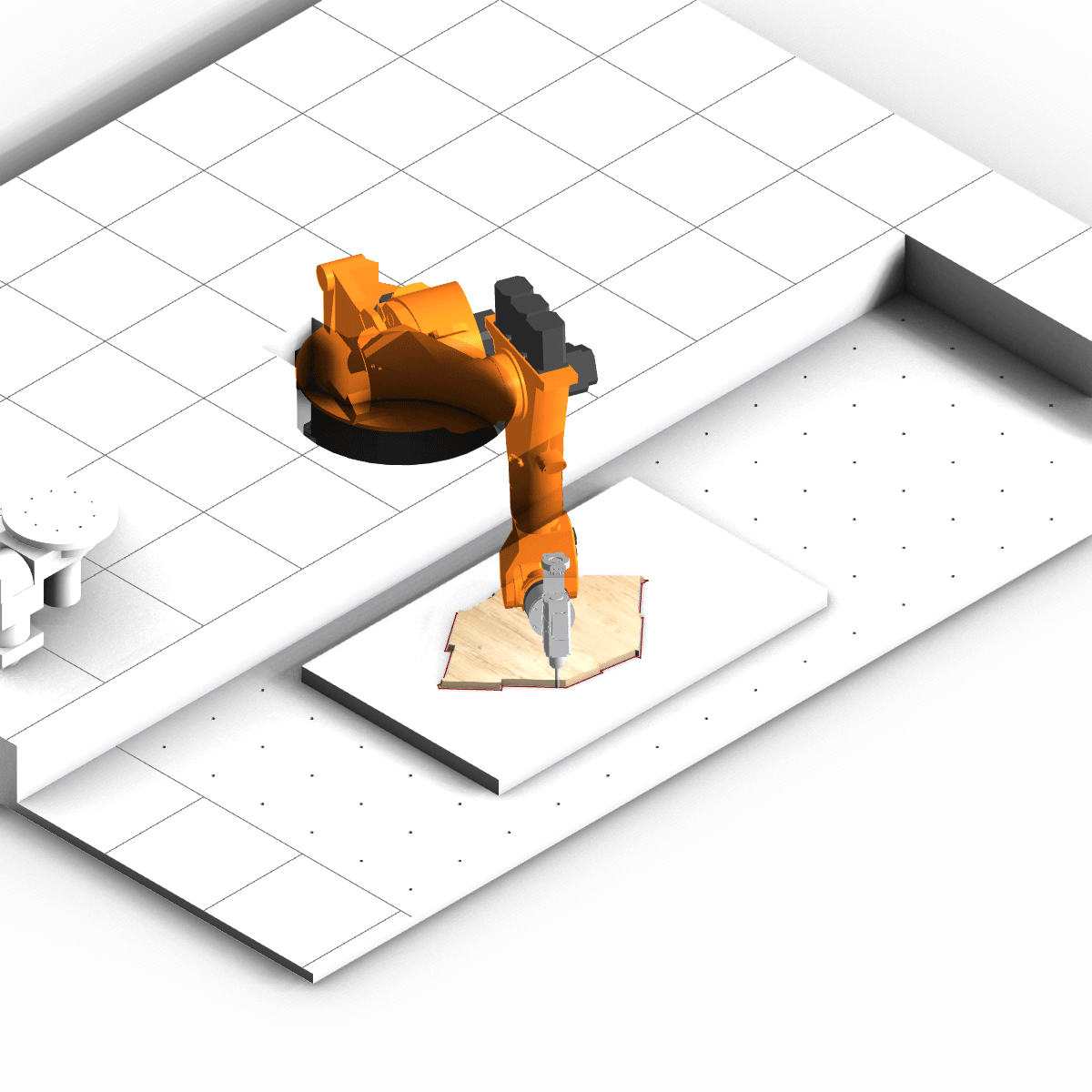Paula Castel Griñó




Coplanar & Continuous
TYPE
Robotic milling
LOCATION
Stuttgart, Germany
YEAR
2023


The projects looks to develop a fabrication method where natural flax fiber is coplanar and continuous across finger joints that lie between a series of discrete timber plates. The development of a robotic system and a customized joinery method for connecting timber plates is explored, where a robot mills grooves and inserts flax fiber into them. These grooves and the embedded tension-acting uncured natural fiber respond to global structural forces. This project was developed as part of the Computational design and digital fabrication seminar at ITECH master´s program in collaboration with Cornelius Carl and Samuel Losi.



In light of this objective, Coplanar and Continuous establishes a workflow as follows: (1) The design of a global geometry that can effectively withstand both tension and compression forces is developed. This design is composed of discrete planar timber elements and is created through a rapid implementation technique involving circle-packing, a method that evenly distributes points across a surface. Subsequent investigations will explore agent-based modeling approaches, which have shown promise in addressing similar problems. (2) Principle Stress Lines, representing the primary stress directions within the global design, are generated and simplified. This process involves simulating the global design using Finite Element Method (FEM) analysis software such as Karamba or Millipede, both of which are Grasshopper Plugins. (3) Fiber reinforcement is fitted along the simplified Principle Stress Lines. This involves accounting for the bends where timber plates meet and ensuring that the fiber is under tension and linear when placed on top of the timber. (4) Robot milling toolpaths are generated based on the fitting of FPC and the configuration of timber finger joints. (5) The actual robotic milling process takes place, wherein each timber plate is milled to its specified geometry. (6) Assembly begins, and the fiber is inlaid. Gradually, the global geometry is assembled in portions.
This project takes the stance that milling excessive amounts of timber fibers with the sole purpose of replacing them with flax fiber is not a practical approach. Instead, the fiber is strategically positioned on the timber surface to minimize the removal of timber volume. The groove cuts are reduced to the locations where the fiber transitions from one timber plate to another, facilitating their global connection. The arrangement of the fiber and the milling of timber are governed by the concept of curvature continuity. The three-dimensional timber connection is achieved through a simplified finger joint that includes sparsely located grooves for incorporating fiber reinforcement. While the finger joints primarily handle local forces, the fiber extends continuously across significant portions of the structure, considering the influence of global forces. This combined orientation of the two materials fulfills the requirements of both tension and compression forces.


The fabrication setup for this project draws inspiration from the robotic assembly line utilized in the BUGA Wood pavilion. It consists of a timber plate held in place by spacers, allowing access to each edge of the plate without the need for flipping. Adjacent to the plate is an industrial 6-axis robot arm, positioned to encompass the entire work area of the timber plate. The robot initiates the cutting process by shaping the sparsely staggered timber interlocking connections along the plate's edges.





